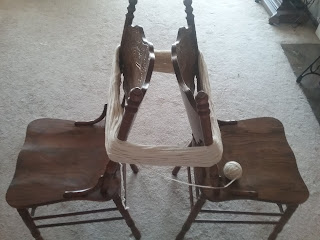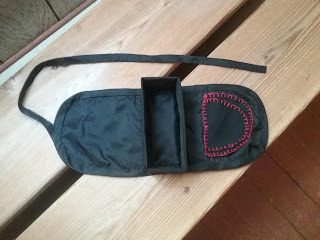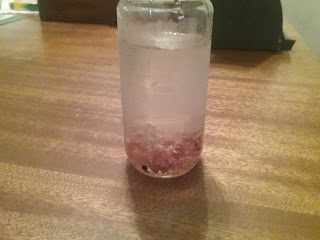Drafted out of the 1795-1805 example in Regency Women's Dresses.
I realized half-way though that this should have been a photo tutorial, so...here's a half-illustrated one.
I started by scaling up the book pattern, whereupon I realized that the scale provided is... not right. As given, the 'short stays' allegedly have a 17" center front and 23" center back length. For comparison, my 'long stays' (which run from mid-bust to upper hip) have a 14" busk. Halfing the given scale (1 square = 1/2") gives a 8.5" center front, which more closely resembles the provided illustration, with the lower edge of the stays reaching the bottom of the rib cage.
Anyway, I drafted my stays using the half-scale length, and adjusted the width to my personal measurements. Since most squishyness is up front, I measured between my shoulder blades, and widened the back pieces of the pattern to that measurement by the 'slash-n-spread' method. For the front pieces, I kept the area near the underarm curve at the initial proportions, and used slash-and-spread to widen the central area of the front pieces. After the first test, I ended up removing nearly 4 inches from the center front, and re-shaped the center back seam to suit the curvature of my back. Much of the curving 'tail' of the original pattern did get revised out this way. I also cut the straps extra long, and then shortened them to fit.
Once I had a working pattern, I cut out a double layer of heavy linen (four copies each of front, back, and strap pieces), and marked the boning channels on the inside layer.
The original garment was apparently stitched by whipping together the individual pieces (the raw edged being turned in and sandwiched between the inner and outer layers). Being short on time, I changed this to machine sewing in the following way:
1. Prepare the two straps by folding in the seam allowances on the long sides of the four strap pieces. Match up inside and outside layers, and topstitch the long edges.
2. Sew together two front and two back pieces to make the lining; repeat to make the outer layer.
3. Baste the straps to the lining.
4. With right sides together, join the lining and outer layer, by stitching along the upper edge. This will sandwich the short, raw edges of the straps between the two layers. [I nearly just pressed the seam allowance and top-stitched this, but I wanted the straps well-secured before doing so].
5. Turn the stays right sides out, press the seam allowances all around the raw edges, and top stitch from the center front, over the previously sewn upper edge (to help stabilize it further), and down the other center front edge.
6. Stitch the boning channels. I started at the center back, paying particular attention to the side seams, where short angled bones meet at the seam. I did the ones on the back pieces as normal, and inserted the bones; for the second set, I stitched the uppermost seam, slide in the bone along the long side of the eventual channel, stitched the middle seam (between the two bone channels), slide in the second bone, and then finished the channel. After all four bones were in place, I top-stitched over the side seam, sealing off the four channels. The angled bones at the center front are more straightforward, but do need to be stitched and inserted before the stitching the vertical channels at the center front.
 |
| The tricky meeting of short, angled boning channels at the side seam. |
8. Mark and make the lacing holes at the center front. I used two-piece metal grommets. Hand-bound eyelets would be more accurate, but time is an issue here. And my particular shape will be putting a lot of strain on the lacing...
 |
| Inserting the grommets. As always, I put one in backward. |
 |
| But seriously, this ink comes out much faster and neater than water-soluble pens. |
 |
| Finished stays. |









